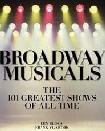SEARCH
REVIEWS
FEATURES
NEWS
Etcetera and
Short Term Listings
LISTINGS
Broadway
Off-Broadway
BOOKS and CDs
OTHER PLACES
Berkshires
London
LA/San Diego
Philadelphia
Elsewhere
QUOTES
On TKTS
LETTERS TO EDITOR
FILM
LINKS
MISCELLANEOUS
Free Updates
Masthead
Writing for us
A CurtainUp Review
Pay Up
It is easy for theatre experiments to fall apart in the execution, because so many practical considerations must be dealt with between the idea and the performance. But in the case of the Pig Iron Theatre Company's Pay Up, the entire piece from conception through performance-installation is cogitated and carefully planned, rehearsed, and carried out to the last detail.
Trained staff clad in white coveralls inhabit and manage a very large white space in which there are several white performance cubicles, all slightly different, the size of small rooms. An unseen announcer provides information, gives instructions, and runs the proceedings in a controlled environment reminiscent of THX 1138.
Experiential to an unusual degree, the production is designed so that action taken by audience members actually will determine their individual experience of the show. This remarkable experiment has a number of variables. The factor of what audience members will pay to see is one of them. Icons on site maps offered by staff classify show-vignettes as extraordinary, ordinary, sad, funny, slow or fast. Audience-participants can determine which "opportunity" they would like to see. However, choices based on payment for content quickly become eclipsed by other exigencies as scarcities are realized.
Not only is there a limited amount of space in each performing cubicle, but there are more performances than there is time to see them. Each person will not be able to see everything. And then prices go up. Audience members learn to rush to each event -- at the sound of the buzzer (Pavlov, arf arf) -- in order to get to a performance before capacity is reached and they are shut out. Remarkable is the audience's willingness to participate, to be regimented, manipulated, conditioned, and co-opted into the event, even as the feel of being a subject in an experiment gets a little creepy.
Words and action are separated in most of the short performances. The audience uses headphones, and disembodied voices of actors may or may not match the actors performing. For example a white woman may act a part spoken by a black male or vice versa. Across the board, individual actors movements are true, the timing, flawless.
Within an overall culture of efficient staff and compliant audience, eight individual events take place with one-to-four actors and a small audience segment. In one instance the audience looks into a performance box through a limited number of peek holes. There are recurring themes often involving something about a white box. Some scenes are monkey experiments, some are about relationships. All are about currency transactions in some way, and there is a suggestion of cross-fertilization among discrete pieces.
Scheduled dance breaks feature large performances. Full, loud singing, well polished lyrics, and all-cast dances --including Busby Berkeley-esque arrangements, briefly dominate the central space.
Every facet of the experience has been anticipated and handled, from overall structure to scene content to crowd management to staff behavior (calm, firm, and polite). Even shut-out audience members are not overlooked, as assigned disaffected staff share their pain.
As the end of the performance nears the voice on the mic again turns to the idea of choices people make, cataloguing events currently in town (and their prices) that this audience could have chosen instead of attending this performance. The individual pieces of theatre within the larger performance are little works of art in their smallness and their perfection.
Dan Rothenberg, who directed this massive effort, deserves a pile of credit. So does the "Research Core" , which includes designer Anna Kiraly and writer/sound man Robert Quillen Camp among other key production people. The company, supplemented by fine actors brought in for the occasion, comprises an exceptional ensemble. Overheard after the event, "This is what we come to the Fringe for." Amen. Whew.
|
PAY UP
by Pig Iron Theatre Company et al Writer: Robert Quillen Camp Directed by Dan Rothenberg Cast: Thirty-five performers including the Pig Iron Theatre "Research Core" group: Gabriel Quinn Bauriedel, Johnnie Hobbs III, Robert Quillen Camp, Christie Parker, Morgan Eckert, Dan Rothenberg, Anna Kiraly, Dido van Reigersberg Production Design: Anna Kiraly Lighting Design: Brian Lilienthal; Matt Shima, assistant Sound Design: Robert Quillen Camp; James Sugg, assistant Choreography Consultants: Andrew Simonet, Amanda Schoonover The National, 119 Arch Street Running time: 70 mins 09/02/05 to 09/17/05 Live Arts Festival Reviewed by Kathryn Osenlund based on 09/08 performance |

Easy-on-the budget super gift for yourself and your musical loving friends. Tons of gorgeous pictures.

>6, 500 Comparative Phrases including 800 Shakespearean Metaphors by our editor.
Click image to buy.
Go here for details and larger image.







